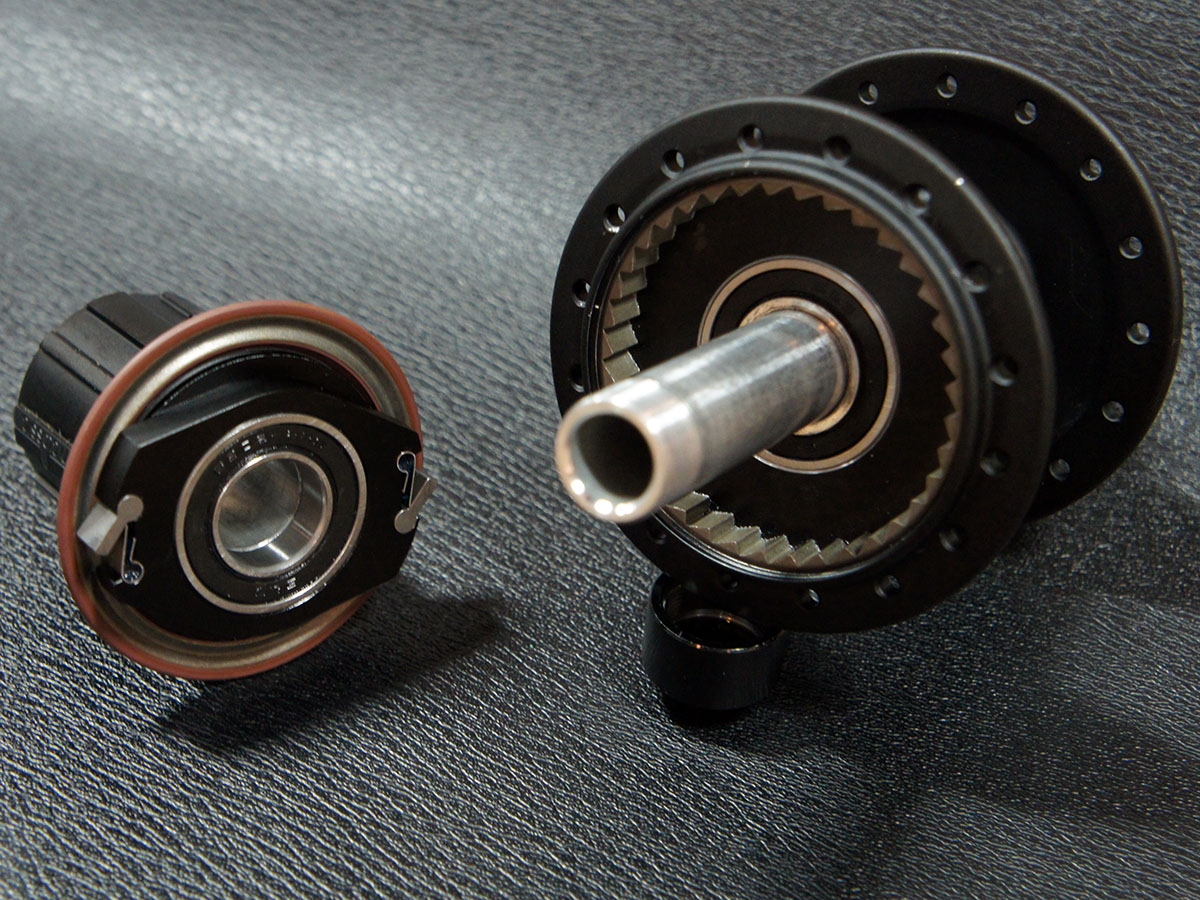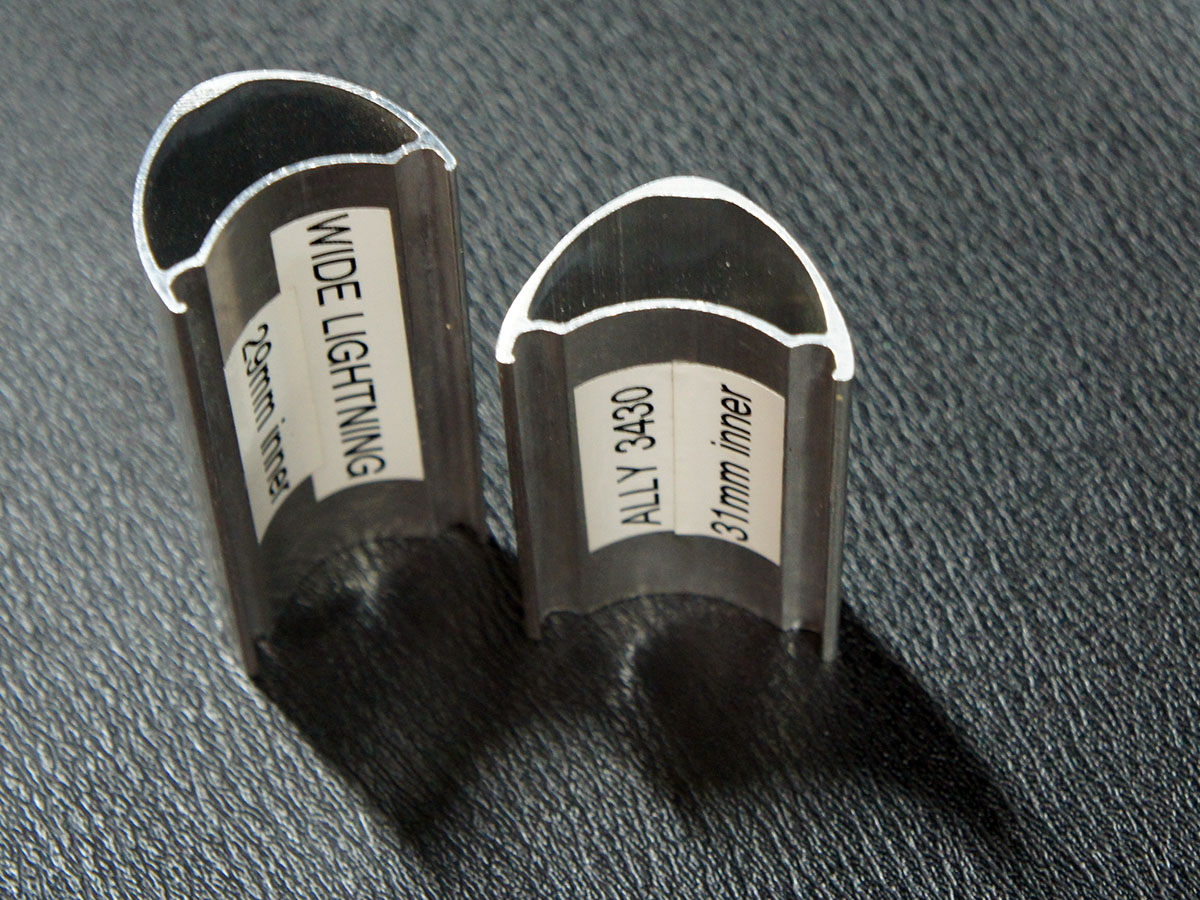
When surveying the bike industry, long time wheel makers American Classic saw a huge opportunity in the poor state of OEM wheelsets. There’s a whole lot of meh between the entry level and high end of the market, with lots of heavy wheels, poor tubeless compatibility, and questionable hubs.
Company founder Bill Shook responded by using his long wheel design and sourcing experience to come up with what looks to be a very attractive series of options- options that we wouldn’t be surprised or disappointed to see popping up on the shop floor. The model names aren’t catchy, but all mountain options start with the hub pictured above. By moving the pawls out from the hub center, Shook was able to fit substantial bearings and pawl teeth without sacrificing strength or engagement speed. The hub shown has a pair of alternating pawls that mate with a 37 teeth for 74 points of engagement (at 4.9° per). That’s pretty quick for a stock hub- and the fastest of any American Classic hub… to date.

Rims (such as the logically-named 3430, which measures 34mm outside, 30mm tall, and 31mm inside) have smilar profiles to their premium siblings but increased wall thicknesses for improved durability. American Classic has always used 32 J-bend spokes in their mountain wheels, a welcome trend that is likely to continue.
With heavier rims, J-bend spokes, and less intricately-machined hubs, weights are up- but not by as much as one might expect. The cross-country- and trail-oriented 3430 is said to weigh 1,480g in a 27.5 wheel while there aren’t many mid-range trail bikes that wouldn’t benefit from a pair of 1,619g 3834s. The wheels won’t be offered aftermarket for a year or more- but should begin appearing on complete bikes in the £2,000-3,000 range within the next twelve months.
Latest Singletrack Merch
Buying and wearing our sustainable merch is another great way to support Singletrack





“Grap”?
2 alternating pawls, so does that mean only 1 pawl engaged at once? Is that common? doesn’t sound right to me, all your power supported by 1 little bit of metal (but I don’t know how to build hubs)
Big chunky bearings tho, yeah I like the sound of that.
D0NK,
You’re right- only one pawl is engaged at once. The key here is that, as the pawls move out from the axle the same torque will ask less of each one. Will it work? We’ll have to see- but it sounds like the theory is that that price point 2- or 3-pawl hubs don’t truly have truly simultaneous engagement and that one or two are bearing the brunt of your pedaling at any given time.